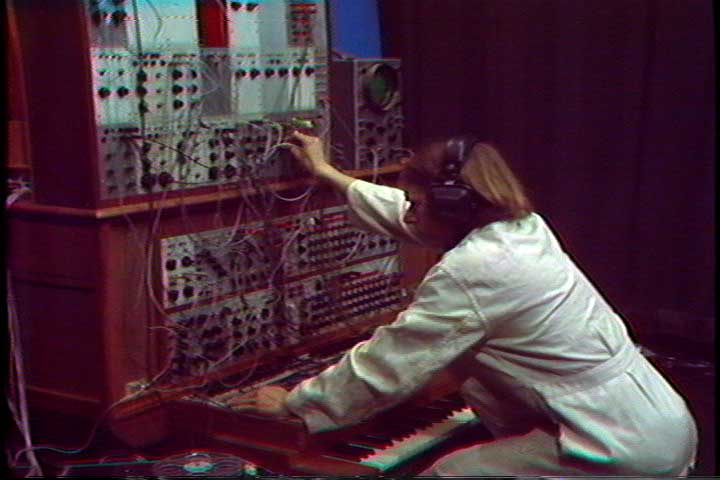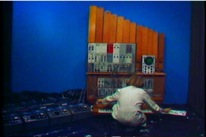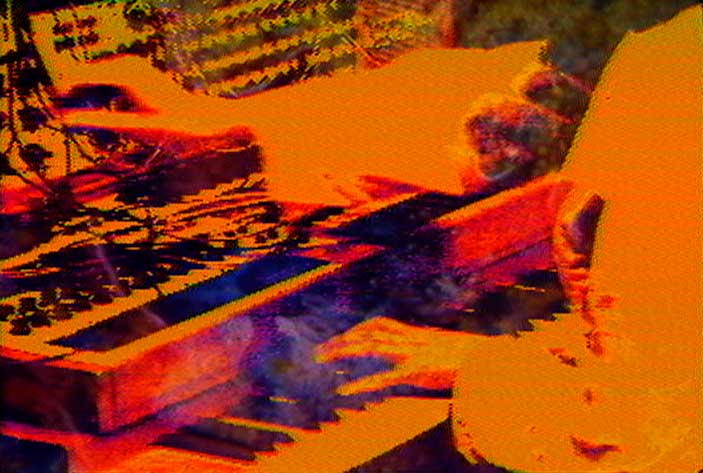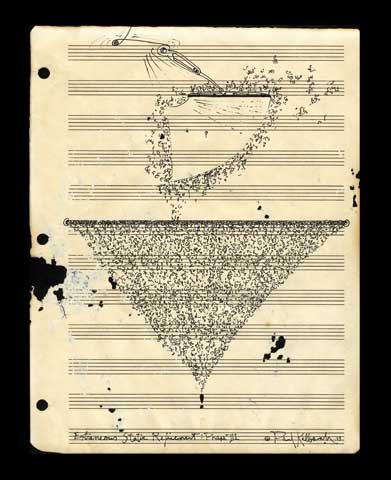SIZAGY excerpt from cassette recording of live solo performance of AEOLIAN DREAM / SIZAGY at the 5th Annual San Francisco Free Music Festival, Metropolitan Art Center.
10:03 excerpt © Paul Kalbach 1980


MUSIC
In 1972, I bought my first reel-to-reel tape recorder and started experimenting with “Musique Concrète” and was immediately hooked. I had an opportunity to play and record a Buchla Synthesizer belonging to Suzanne Ciani, housed at the time in Francis Coppola‘s Zoetrope Studio in San Francisco. I was hooked even more. I bought a dozen old language lab reel-to-reel machines from the State Educational Surplus Agency for $1 each and began putting together my own sound studio. My first piece resulting from this was “Extraneous Static Refinement: Phase III” which premiered on Pacifica Radio KPFA in 1973 when I was Guest Composer on Charles Amirkhanian’s Morning Concert show.
This demo contains excerpts from a variety of different pieces.
© Paul Kalbach 1972-2006


The setup for AEOLIAN DREAM included 12 reel-to-reel recorders along with the Buchla and a Horner Pianet. Six of them played pre-recorded aeolian (wind-powered) strings (guitars, sitar, ukelin), Tibetan horns, and a P.G. & E. gas meter. I controlled their mix by a touch-sensitive capacitance keyboard. The other six tape machines were used as a delay line for the output of the Buchla; that is, the synthesizer output was recorded on the first tape recorder, then played back delayed as the tape passed through each playback head, pulled by the take-up reel of the last machine in the line. This excerpt includes only the last 10 minutes (SIZAGY) of the 28 minute performance, which uses NO tapes or delay.
EXTRANEOUS STATIC REFINEMENT: PHASE III
3:18 excerpt © Paul Kalbach 1972


PAUL KALBACH

Shortly thereafter, I met Don Buchla, inventor of the Buchla Synthesizer, when he was having a garage sale while preparing to move to a different space. I bought from him some un-stuffed circuit boards, some partially stuffed boards, some blank control panels, some modules that weren’t working and some that did work. Some were prototypes; no circuit board, just components soldered together like a spider web. He even gave me some circuit diagrams. This was old stuff; some of it from the days of the San Francisco Tape Music Center in the 60’s. I guess it was junk to Don, for he was moving on to designing ever
more esoteric systems.
So I began to build my own Buchla; building upon what I had gotten from Don, using recycled televisions for parts and the general refuse from western civilization. For its’ main cabinet, I removed the TV from a Montgomery-Ward Home Entertainment Center - it still has the turntable and amplifier. Not knowing anything about electronics, the first thing I built, a power supply, immediately went up in smoke when I plugged it in. I didn’t know that diodes were directional, so I learned by trial and error.